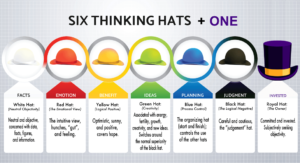Having made a ton of mistakes already in my short life, I started to look back to figure out what were some of the common themes.
One theme to my mistakes was making impulsive decisions … and usually the wrong one!
So, I have since put together a Decision Making Framework that I think could help you.
I use it mentally every time I have to make a key decision in my life.
It involves asking myself the following questions:
- What are the pros and cons – list them out
- What are the risks (worst case, probable cases, outliers)
- What’s the worse thing that can happen?
- What’s the best thing that can happen?
- Can I live with either of those outcomes (the worst or best)?
- What is the total cost of this decision (in time and money)?
- Are there any (better/cheaper) alternatives?
- Do I have to make a decision ‘now’?
- WIIFM – what’s in it for them and what’s in it for me? What is their agenda?
When I need to document my decision criteria I use a formal decision-making matrix with weighted scoring.
My business partner and I put together a rather robust one as seen in the screenshot below:
You can access it here –> link to google spreadsheet and make a copy for yourself!







